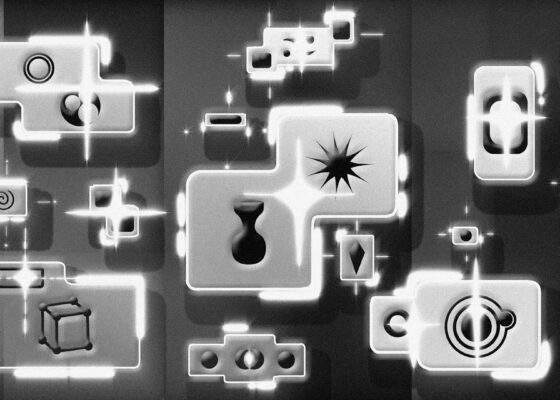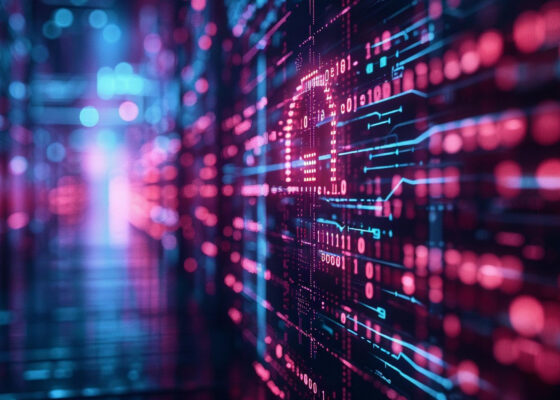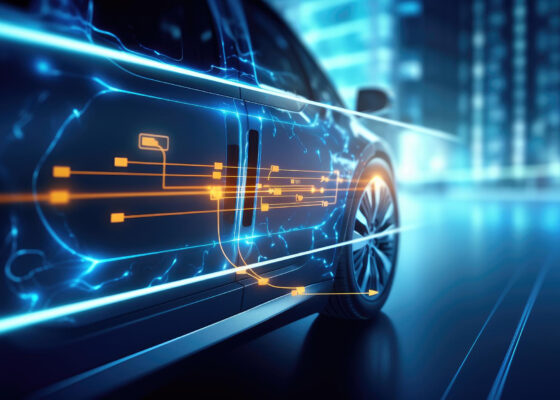
Between reality and simulation: the rise of digital twins in the modern technology landscape
The fourth industrial revolution, or Industry 4.0, has fundamentally changed the way organizations optimize their operational processes, drive product development, and improve customer service. The so-called “digital twins” – digital twins of physical products, equipment, and processes – are one of the key technologies driving this revolution. In this article, we analyze the significance, benefits, and potential applications of digital twins.
What is a digital twin?
The basic idea behind digital twins is to connect the physical and digital worlds to make better decisions, work more efficiently, and drive innovation. They offer the ability to generate and monitor real objects or systems in real time by collecting and visualizing data from sensors and other sources. This data is converted into models that enable predictions, scenarios to be tested, and improvements to be made. A digital twin can take many forms, from simple models of individual machines to complex systems that model entire factories or cities. This makes it possible to simulate complex situations and, for example, anticipate and optimize the effects of any urban planning changes cost-efficiently. The interaction of several factors in the inner-city transport infrastructure can be easily optimized and coordinated using computer simulations (Fraunhofer IESE, 2021).
The history of digital twin technology dates back to the 1960s. NASA began carrying out simulations of spacecraft to test their behavior under various conditions before they were sent into space. These virtual models formed the basis for the development of real spacecraft. In recent years, the technology of the digital twin has evolved, mainly due to the rise of artificial intelligence, machine learning, and big data, and it has become an important tool for Industry 4.0 (NASA Technical Support Server, 2021).
The benefits of digital twins in various industries and sectors
The integration of digital twins in a wide range of industries has the potential to change our world in the long term. In various industries, including the automotive and public sectors, there is currently a particular focus on developing and applying digital twins. One prominent example of this technological development is the partnership between Automotive and chip manufacturers, in which future factories will be digitally mirrored to make processes more efficient and cost-effective. Digital twins are also becoming increasingly important in public infrastructure and urban planning.
Below are some key aspects that illustrate the focus on digital twins in the sectors mentioned:
1. Automotive sector:
- Digital Twins are used to map future factories.
- The aim is to increase efficiency and cost savings in production processes.
2. Public sector – urban and infrastructure planning:
- Digital Twins are used to utilize real-time data for mapping cities and infrastructures.
- Digital modelling allows complex processes to be analyzed and optimized more quickly.
- A concrete application example is the reduction of heat islands by adapting digital images based on current data.
2.1 Simultaneous simulation of interactions:
- Digital twins enable the simultaneous simulation of various interactions in urban planning.
- This facilitates the holistic optimization of urban processes and infrastructure elements.
3. Energy sector:
- Digital twins play a particularly important role in the decentralisation of energy supply and generation as well as in renewable energies.
- Among other things, it is possible to subject important plants and systems to a stress test as part of preparations for a wide range of scenarios, including severe storms, in order to identify weak points.
While digital twins used to be used exclusively in producing and developing technically complex products, they are now found in many industries. For example, in healthcare, where they can be used to increase the efficiency of bed occupancy in hospitals or to analyze patient data and thus improve patient care, through to agriculture, where digital twins can be used to optimize plant growth and crop yields through more efficient irrigation and fertilization of fields.

Fundamental challenges
The technological infrastructure and data procurement are among the biggest challenges of the application. Creating and maintaining digital twins require powerful sensors, data processing systems, and reliable connectivity. Cities must make significant investments to ensure that the necessary technology is in place and working. As the collection and processing of data takes place on a large scale, they must also ensure that data protection guidelines and other legal regulations are complied with.
This leads to the second difficulty: data protection. To protect citizens’ privacy, cities and municipalities must carefully consider how they use and store the data they collect. The successful implementation of digital twins requires strategic consideration of social and cultural differences. This includes adapting data-sharing practices to local norms, addressing trust and privacy concerns, and fostering digital skills in diverse communities. A culturally sensitive strategy can overcome potential barriers and promote the broad acceptance of digital twins. Data protection laws such as the EU’s General Data Protection Regulation (GDPR) must be complied with to gain citizens’ trust in this technology and prevent misuse. Cities and municipalities face a complex and ongoing challenge to reconcile the benefits of digital twins with privacy protection.
Furthermore, maintenance intensity should be addressed when implementing and utilizing technological solutions. At a time when organizations are increasingly relying on innovative technologies to remain competitive, it is important to understand that the maintenance and upkeep of a project can have a significant impact on its success in the long term. The complex maintenance of technologies such as Digital Twins requires considerable time and financial resources to ensure their effectiveness through continuous updates and adjustments. It requires careful planning and clearly defined responsibilities to balance maintenance effort and economic efficiency. Resources for regular review, troubleshooting, and updating are essential to ensure the long-term performance and added value of the system. Our experience shows that a careful (maintenance) strategy saves costs and makes technological solutions more reliable and stable.
Decisive competitive advantage for the future
Digital Twins use sensors integrated into physical objects and collect real-time data. This data, which contains information about the condition and performance of real-world entities, is transferred to digital platforms via IoT technologies. Together, sensors and IoT enable continuous data collection and transmission, which is the basis for creating and updating accurate digital representations. These virtual models form the basis for analyses, simulations, and optimizations in the context of digital twins.
The future for this is promising. With governments and (large) organizations focussing on the rapid (further) development of artificial intelligence and machine learning, digital twins will become even more intelligent and autonomous. Overall, digital twins are, therefore, a key technology that supports organizations in mastering the challenges of Industry 4.0. They offer many possible applications and help optimize processes, reduce costs, and increase customer satisfaction. Organizations and cities that adopt this technology and use it effectively will gain a decisive competitive advantage in the fast-moving business world.
In the second part of our article, we shed light on why and how cities, particularly, should utilize this technology to become smart cities.
Get in touch with us:

Christopher Waidelich
Manager




